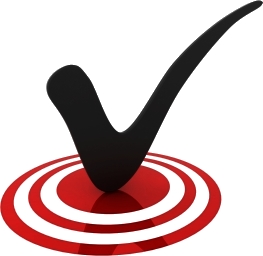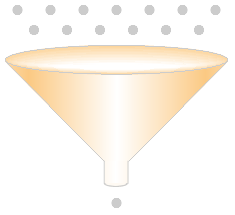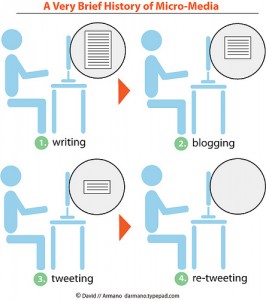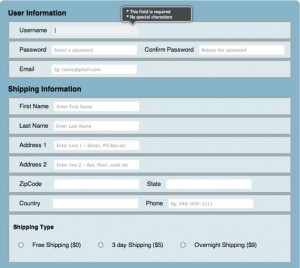Conversions in business-to-business marketing and sales processes are always exciting things. Amid the excitement, its important that the entire team shares a consistent understanding of how to measure sales funnel conversions.
This article lays out the three key performance metrics for conversions and why they are important. Along the way, you’ll learn the best practices to increase the leads of your businesses that many lead generation b2b companies implement.
Conversions

Credit: Eyeview
Simply put, a conversion is where an individual progresses from a less engaged state to a more engaged state. Increasing levels of engagement correlate to some degree with relevance, trust and purchase intent–all good things.
The total number of conversions is important because they give a sense of the magnitude of activity in the sales process. And size does matter. Each member of the sales team needs a steady flow of conversions in their territory to stay productive and hit their numbers.
Conversion Events
Conversions events come at many different stages in the funnel and mark the moment that a conversion becomes measurable. Conversions happen in the mind of the prospect first, and the vendor learns of the change from direct communication or through behavior measured on the web site. Examples of conversion events include:
- A customer sends a purchase order, converting a forecasted opportunity into a closed deal
- A sales accepted lead (SAL) qualifies into an opportunity
- A website visitor becoming an inquirya prospective customer visits a trade show booth
- A prospective customer requests a product demonstration
- A name in the marketing database, through automated scoring crosses the Marketing Qualified Lead (MQL) threshold, is passed to sales
The counts for each conversion event are important because they helps to identify bottlenecks and opportunities within the process. You need to know if you have enough lead development personnel in place to qualify incoming leads before they grow cold. Likewise, you need to make sure their is sufficient flow of MQLs for the number of quota-carrying sales staff. Not all conversion events are equally important to the sales process. Each organization needs to decide which conversion events are worth tracking and how various conversions events impact the sales funnel.
Conversion Rate
For each conversion event in your sales process, there is an an associated conversion rate.
The conversion rate for each conversion event is important as a measure of process efficiency. It takes a bit of experience with your lead generation techniques and sales processes to establish the “natural” conversion rates for various events. But once you have a benchmark, the next step is to look for ways to improve the conversion rates along the way.
Conversion rate improvements play a major role in profitability. If a particular ad campaign yields 10% more results, it drove more opportunities for the same budget. Likewise, if the same sales team is able to close 15% of MQLs instead of 10%, a nice percentage of the increased revenue flows down to the bottom line.
Getting Sales Funnel Conversions Right
We’ve done a bit of math today but don’t forget that the real job is creating conversions. Conversions happen in buyers’ heads and are only counted when they hit the funnel. Defining the value proposition, making repeated offers, executing through the sales process is how you earn sales funnel conversions. The bulk of you investment needs to be focused on reaching out to new audiences and providing conversion-worthy content, products and experiences.
Tracking sales funnel conversions is very important because they often involve hand-offs from one person or organization to another. Hand-offs are an area where there is a heightened risk that something goes wrong. Best practices for hand-offs involve rules (either manual or automated) that ensure 100% of handoffs occur on a timely basis. What’s more, its not sufficient to hand-off a lead to sales to a “sales team;” it needs to be assigned to a specific person, typically based on a territory assignment. Another best practice is to measure the sales rep against a response-time SLA for newly assigned leads, as many kinds of leads get cold very quickly.
Both sales and marketing professionals still need to prioritize creation of new customers. Understanding the mathematics of sales funnel conversions helps you understand how the funnel comes together and where you can generate the most leverage for your business.




 In the olden-days of Handshake 1.0, a handshake was a precursor of bilateral communication. A protocol of acknowledging a peaceful relationship and mutual trust with the idea of building upon the status quo. An initial meeting between a vendor and a prospective customer. A politician building a coalition. A suitor wooing a debutante. Two or more people carve out a sacred space for a live interaction in the hopes of a mutually satisfactory outcome. Stakes are reasonably low with a first handshake; and the budding relationship can quickly go in any direction. Compare this to two people who pass in the street with nothing more than a glance. No rapport. No communication. No goals for advancing an agenda.
In the olden-days of Handshake 1.0, a handshake was a precursor of bilateral communication. A protocol of acknowledging a peaceful relationship and mutual trust with the idea of building upon the status quo. An initial meeting between a vendor and a prospective customer. A politician building a coalition. A suitor wooing a debutante. Two or more people carve out a sacred space for a live interaction in the hopes of a mutually satisfactory outcome. Stakes are reasonably low with a first handshake; and the budding relationship can quickly go in any direction. Compare this to two people who pass in the street with nothing more than a glance. No rapport. No communication. No goals for advancing an agenda. What is interesting is what happens next: a fast exit or an attempt at rapport building. Credibility and effective design by the site owner conspires with desire and perhaps laziness by the visitor to earn a second and a third click.
What is interesting is what happens next: a fast exit or an attempt at rapport building. Credibility and effective design by the site owner conspires with desire and perhaps laziness by the visitor to earn a second and a third click.